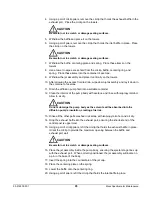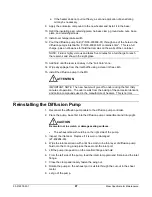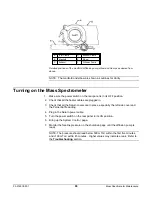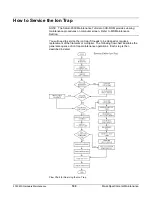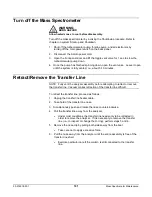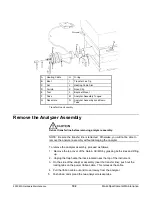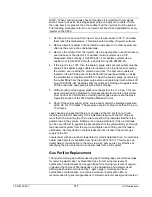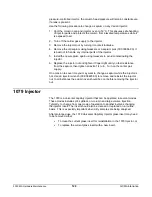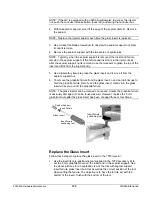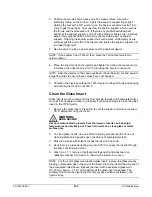
2000 MS Hardware Maintenance
108
Mass Spectrometer Maintenance
2. After you clean a part, hold it under running water and use a clean applicator
to remove the last visible traces of aluminum oxide.
3. Immediately place the clean part in a beaker containing a solution of
detergent and warm water.
NOTE: Do not let the slurry dry on the metal. Dried aluminum oxide is difficult to
remove.
4. When you have finished cleaning all of the parts, place the beaker in an
ultrasonic cleaner, and subject the beaker and its contents to ultrasound for
about 1 minute.
5. Rinse each part with fresh water.
6. Using clean tools, place the parts in a beaker containing de-ionized water,
then subject the beaker and its contents to ultrasound for about 1 minute.
•
If the water is cloudy afterwards, replace the deionized water and repeat.
7. Rinse the parts with methanol.
8. Place the parts in a beaker of fresh methanol. Subject the beaker and its
contents to ultrasound for about 1 minute.
NOTE: Once the ion trap parts are clean, wear clean, lint-free gloves in
subsequent handling of the parts to prevent contamination. Do not wear vinyl
gloves.
9. Remove the ion trap parts from the beaker, and place them on a clean, lint-
free surface.
•
Allow the parts to dry in air.
10. Inspect each part to make sure that all spots and particles have been
removed.
•
If you observe any contamination, clean the part again using the
procedure described above.
NOTE: You can clean any small stainless steel parts, e.g., the electron gate
conductor, the gate, and wavy washer spring, by placing them along with the
other stainless steel parts in methanol and subjecting them to ultrasound for 1
minute.
NOTE: Check the oven trap near the filament entrance hole for carbon deposits.
Carbon buildup may result in lower sensitivity and/or shorter filament lifetime.
The carbon stains should be removed
only
with a cotton swab and methanol.
After cleaning, check filament entrance hole for particles and fibers. Area must
be cleaned before reassembly.


